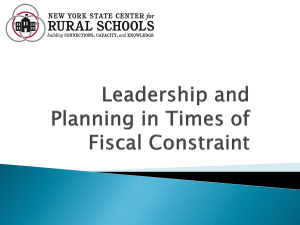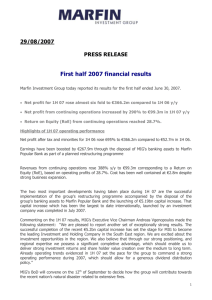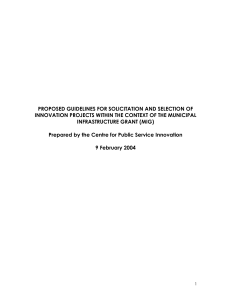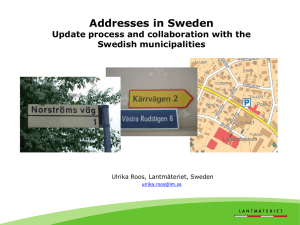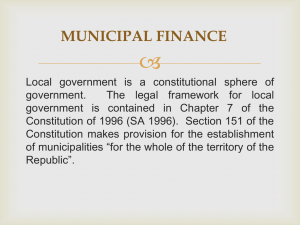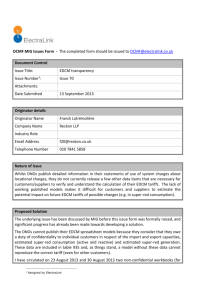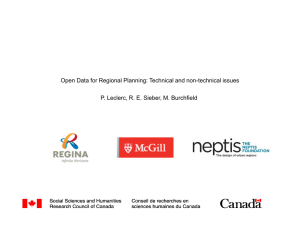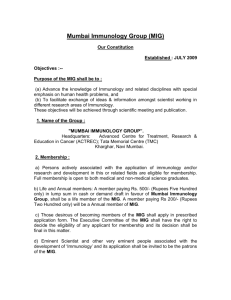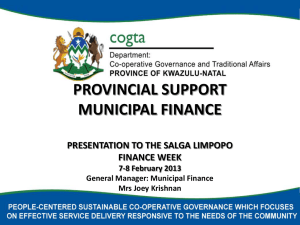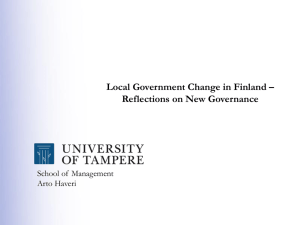Review Municipal Infrastructure Grant Policy Framework
advertisement
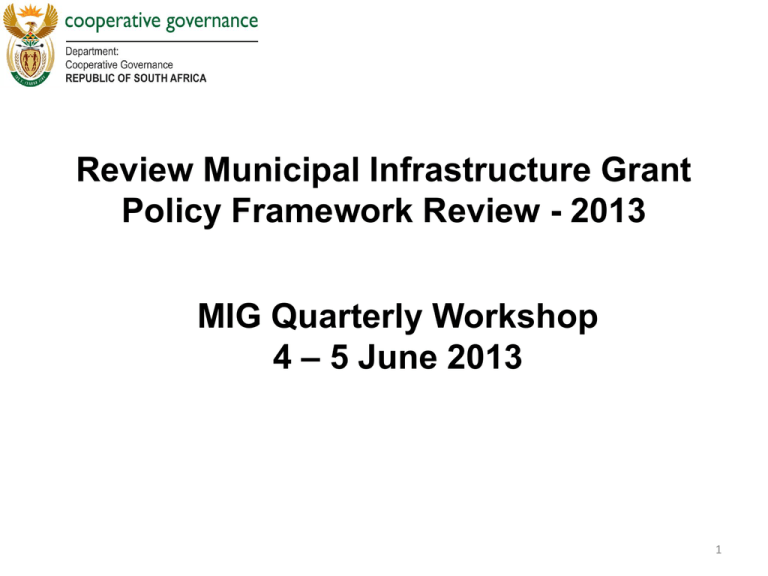
Review Municipal Infrastructure Grant Policy Framework Review - 2013 MIG Quarterly Workshop 4 – 5 June 2013 1 Municipal Infrastructure Grant development since 1994 1994: RDP EMIP MIP BSIG LEDF WSCG CBPWP BSRF 1996: Cabinet decision CMIP UTF MIG INEP 2003: Cabinet decision 2009 review MIG Cities RHIG RBIG Present 2013 USDG 2013 MTEF MWIG Transition New Conditional Grant dispensation on how to deal with municipal infrastructure Does the quantum of funding available deal with the total value chain of sector investment . e.g for water and sanitation it is around 30 billion over the MTEF. Does municipalities optimally access funding? Vision • The municipal infrastructure grant programme is aimed at providing all South Africans with at least a basic level of service by the year 2013 through the provision of grant finance aimed at covering the capital cost of basic infrastructure for the poor. • The MIG programme is a key part of government's overall drive to • alleviate poverty in the country and • employment is maximised • opportunities are created for enterprises to flourish. Objectives of the MIG programme • Supplements the capital costs of providing infrastructure (basic/ appropriate infrastructure) improving basic services to poor households. • MIG is a multi-sectoral programme - Involves all spheres of government including sector departments • Implementation at Local level should integrate with provincial and national priorities articulated within the IDP • Due to limited funding and capacity of municipalities, encourage municipalities to prioritise funding • The grant is a key government’s overall drive to alleviate poverty • Infrastructure should be provided in such a way that employment is maximised and opportunities are created for enterprises to flourish Enhance Local Economic Development spin-offs 4 Need for the review Background • First DoRA was first introduced in 1998, more than R165 billion in infrastructure grants have been made available to municipalities or to national departments 107 to spend on their behalf. • Concern that the substantial resources (R60b MIG since 2004) were and are not being used optimally and that the pace of service delivery rollout suffers as a result. • In response to this, infrastructure conditional grant transfers to local government will be reviewed and reformed to maximise their effectiveness 2014. • This review will be coordinated by the National Treasury, using a collaborative process that will include national departments, SALGA and the FFC, and extensive consultation with municipalities. • In support to above processes the MIG policy Framework Review will bring 5 additional intelligence to the above-mentioned process. Need for the review Background • First DoRA was first introduced in 1998, more than R165 billion in infrastructure grants have been made available to municipalities or to national departments 107 to spend on their behalf. • Concern that the substantial resources (R60 b MIG since 2004) were and are not being used optimally and that the pace of service delivery rollout suffers as a result. • In response to this, infrastructure conditional grant transfers to local government will be reviewed and reformed to maximise their effectiveness 2014. • This review will be coordinated by the National Treasury, using a collaborative process that will include national departments, SALGA and the FFC, and extensive consultation with municipalities. • In support to above processes the MIG policy Framework Review will bring additional intelligence to the above-mentioned process. • The review of the conditional grant system should take cognisance of the vision stated on services to the poor in the NDP 6 Need for the review – Current status • 2014 target for access to basic services: – Water 100% – Sanitation 100% – Electricity 92% – Refuse at 75% • Access figures to basic services as at March 2013 are: – Water: 95,1% (86% functional) – Sanitation: 85% – Electricity: 85% (not part of MIG) – Refuse: 65% 7 Objectives of the review • The MIG Policy Framework should be reviewed through a consultative process with the focus on: • Evaluating the vision, objectives, key principles, institutional arrangements and whether it is still meeting government’s strategic priorities as set out in the National Development Plan such as: – meeting the national infrastructure delivery targets and thus closing the infrastructure delivery gap; – the delivery of sustainable infrastructure in the context of establishing sustainable human settlements, this includes infrastructure investments to cater for environmental considerations; – poverty alleviation; and – local economic growth. 8 Objectives of the review • Evaluating the: – Targeting of the MIG; and – Eligible categories of infrastructure to be funded by the MIG. • Evaluating the: – Grant design mechanism; – Methods to divide funding between municipalities; and – Any other divisions outside to that of municipalities. • Evaluate the conditions applied to the MIG and the monitoring thereof. • Evaluate the DORA requirements and propose best solutions for the sustainability of infrastructure delivery. 9 Objectives of the review • Evaluate the institutional arrangements across all three spheres of government and propose the best solutions for the appropriate project management, monitoring, reporting on and evaluation of the MIG programme. • The recommendations on the above and changes to the MIG Policy Framework should include the views of stakeholders and a case study of municipalities should be used to confirm and verify the issues mentioned above. It is proposed that the case study be based on a sample of thirty (30) municipalities using the categorisation used in the Municipal Infrastructure Investment Framework. – 6 in category B1(local municipalities) – 6 in category B2 (local municipalities) – 6 in category B3 (local municipalities) – 6 in category B4 (local municipalities) – 6 in category C2 (district municipalities) 10 Objectives of the review • Coordinate consultative processes at the national, provincial and local levels of government (e.g. workshops) – Thoroughly document the consultative sessions. – Note that the service provider will have to consider work already completed or currently underway which pertains to the local government fiscal and functional review process and the alignment with the National Development Plan 11 Deliverables and timelines Deliverable by service provider Estimated dates Appointment July 2013 Briefing session with appointed service provider Submission of a project plan 1 week after appointment (5 working days) 1 week after appointment (5 working days) 1 Aug - 31 October 2013 Consultation sessions with stakeholders ends National Provincial Local Government Report with recommendations and first draft of the reviewed Policy Framework document. Final draft of the reviewed Policy Framework, supporting documentation and notes. Reviewed Policy Framework document with supporting documentation and notes 1 - 30 November 2013 1 December - 31 January 2014 1 - 28 February 2014 12 Questions 13
